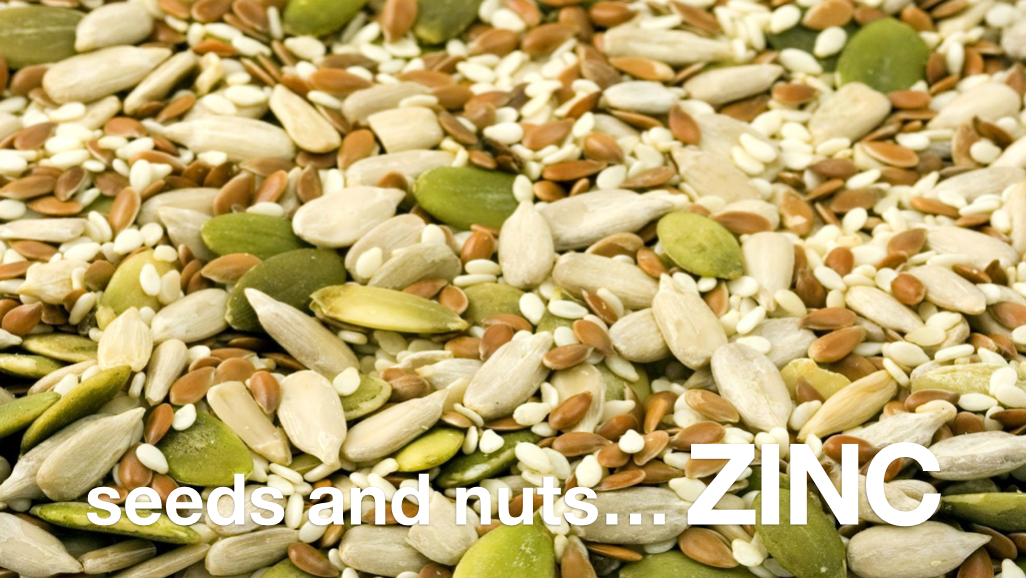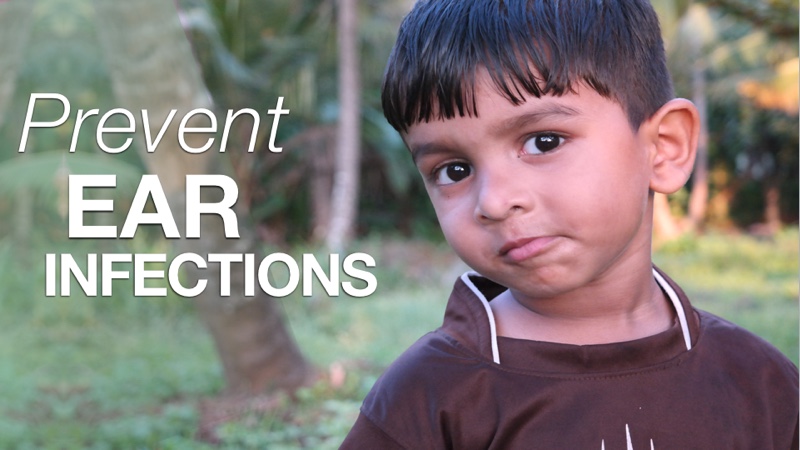Ear infections are often a challenge for children and families alike. There are many causes – and fortunately a number of good solutions that can bring relief and contribute to prevention.
Paediatrician, Dr Leila Masson discusses the challenges of Ear Infections and makes healthy recommendations for you to consider – and discuss with your practitioner.
Antibiotics are Too Commonly Prescribed
Ear infections are the most common reason for antibiotic prescriptions for children.
The highest incidence is between 6 and 24 months of age, while the immune system and gut flora are maturing, a process antibiotics can negatively affect. In an era of increasing resistance of bacteria to antibiotics, over-prescription, and uncertainty about how much longer antibiotics will be effective in fighting infections, we need to turn our focus to prevention.
How Can You Break the Cycle of Ear Infections?
So what are the main factors that increase the risk of ear infections and what can you do to help your child break the cycle of recurrent ear infections and avoid antibiotics?
First of all, keep in mind that 90-95% of ear infections will resolve just as fast with or without antibiotics. This means that most children do not need an antibiotic for an uncomplicated ear infection; in fact they are better off without them. Antibiotics increase the risk of getting another ear infection within 3 months.
Environmental Factors can Lead to Ear Infections
Smoking
Children exposed to second-hand smoke are more likely to suffer from recurrent ear infections. What should you do? It is clear: stop smoking.
Large day-care centres
Children who attend large day-care centres are exposed to more infections; while this appears to train their immune system in the long term, at the same time it increases the risk of ear infections. Progressive countries provide 18-24 months of parental leave, so children do not have to attend day-care from an early age. This should be a right for everyone. If you do not have this option, choose a smaller day-care setting.
Breastfeeding
As a paediatrician and lactation consultant, I cannot stress enough how important it is for your child’s health that you breastfeed him or her. The risk of ear infections reduces by about half if your child is breastfed “at all” (astoundingly this could happen with just a few days of breastfeeding) and the risk reduces even further with longer and exclusive breastfeeding. WHO, Unicef, the AAP (American Academy of Pediatrics), and other public health organisations concerned with the health of children recommend breastfeeding exclusively for 6 months and after that to continue to breastfeed along with solid foods for about 2 years or as long as mother and child wish (it could be argued the longer the better).
I realise that not every woman can breastfeed, but the research shows that with the right support about 95% can. In my ideal world, every woman would have access to the support she needs – from her midwife, doula, lactation consultant, paediatrician, family, and friends.
Breastmilk is a living food packed with antibodies against microbes, active immune cells, cytokines (immune messengers), hormones, and other amazing ingredients that protect against infections. When a mother is exposed to an infectious agent, such as a virus or bacteria, she produces antibodies to this bug to destroy it; the antibodies are excreted from the blood into the breastmilk and when the baby drinks the milk, the antibodies provide active immune protection against those microbes.
Most babies share the mother’s environment; if a breastfeeding baby or toddler attends day-care, the mother should spend at least 10-15 minutes daily there to expose her to the same microbes as her child. The mum’s immune system will then produce the appropriate antibodies to protect the child (via breastmilk). Just like magic.
Avoid Nutritional Deficiencies to Help Prevent Ear Infections
Zinc
Low zinc levels are associated with recurrent ear infections. Australia, New Zealand, and the USA have low zinc levels in the soil. This means that food grown in and animals fed on these soils will not provide enough zinc to meet the needs of a growing child.
Whole grains are good sources of zinc if they are grown in soil that is rich in zinc. In low zinc countries it is difficult to get enough zinc from the diet, especially during periods of growth when the body has high zinc needs (in other words pregnancy, childhood, and teenage years). Zinc deficiency can cause a variety of health problems, including recurrent skin and respiratory infections, irritability, slow wound healing, and problems with brain processing.
White spots on the fingernails are a sign that your child may be low in zinc. Most children I see with recurrent ear infections have low levels of zinc and become healthier once they start taking a supplement. The daily requirement for children 1-3 years is 3mg and you can get it as a drop or in a multivitamin.

Selenium
This is another mineral that is lacking in the soil of many countries and is needed for the immune system to work well. Brazil nuts are a good source of selenium for those who are not allergic to nuts. Children between 1 and 3 years only need half a (crushed up) Brazil nut per day to meet their requirements (25mcg).
Vitamin C
Everyone knows that vitamin C helps prevent and fight infections; it is also anti-inflammatory. A diet with plenty of fresh fruits and vegetables provides natural vitamin C. Vitamin C empowers white blood cells such as lymphocytes and natural killer cells to fight microbes. Vitamin C is water soluble – this means that it is not stored in the body.
If you take more vitamin C than you need you will excrete it in urine and faeces (if you take much too much vitamin C you will get diarrhoea). You actually only absorb about 10% of a vitamin C supplement; unless you take liposomal vitamin C – which has been turned into a fat-soluble solution and is absorbed much better.
Vitamin D
One of the reasons we all get more infections in the winter is that our vitamin D levels drop, as the sun is less intense. Vitamin D is produced when our skin is exposed to sunshine. It stimulates white blood cells and epithelial cells to produce chemicals that kill microbes – for example, cathelicidin and reactive oxygen species (ROS). The further away you live from the equator, the less likely that you get enough vitamin D during the winter.
In line with smart public health policy, Northern European countries provide children with a daily supplement of 400-500IU vitamin D for the first year or two and it is recommended to continue taking vitamin D supplements throughout life at least during winter. Vitamin D is, of course, important for many other aspects of your child’s health – from forming strong bones to a happy mood. So do make sure that your child has a good vitamin D level – the optimal level is between 80-150nmol/L.
Vitamin A
Millions of people around the world are vitamin A deficient and consequently suffer from infections (and night blindness). This is most common in developing countries, but if your child suffers from recurrent ear infections, keep vitamin A in mind. A healthy mucosa (lining of the nose, ears, mouth, and other orifices) prevents bacteria and viruses from causing infections. Vitamin A helps repair mucosa and is also needed for our white blood cells to fight infections.
Vitamin A can be made from beta-carotene (the orange colour in carrot, pumpkin; also abundant in green vegetables like kale, spinach, and broccoli). However, due to their genes, at least 15% of people are not as efficient at converting beta-carotene into vitamin A. Having very orange palms and soles of the feet may be a sign of this inefficiency and indicate that your child may need more preformed vitamin A in the diet or as a supplement.
Vitamin A is a fat-soluble vitamin. This means it is better absorbed when eaten along with fat (go for the healthy kind: avocado, nuts, seeds, olive oil, ghee, butter); it also means that it is stored in the fatty tissues of the body and can be overdosed, so be careful. Keep to the recommended daily dose of 300mcg.
Probiotics
Antibiotics do not just kill the bacteria that cause infection – they also kill our gut bacteria, which are so important for good immune function. That is why most doctors recommend taking a probiotic after a course of antibiotics. Probiotics boost the immune system and children who take a probiotic regularly have fewer infections. The probiotic Lactobacillus Rhamnosus is particularly effective at boosting the immune system by stimulating the production of antibodies and cytokines. Streptococcus Salivarius produces bacteriocin-like inhibitory substances (BLIS) K12 and can be found as a lozenge or a nasal spray to protect against throat and ear infections.
You can provide probiotics as a supplement or as a food: all traditional cultures consume fermented foods, rich in probiotics. Kefir, yoghurt, kombucha, kimchi, and sauerkraut are good examples.
Foods and Herbs
Immune-boosting foods and herbs may help to prevent infections: garlic and ginger are healthy, immune boosting additions to your diet; short-term Echinacea (it stops working after about 2 weeks); elderberry may all help to boost your child’s immune system and prevent further infections.
If your child is allergic or sensitive to specific foods these can cause swelling of mucosal membranes, including the Eustachian tube which connects the mouth to the ear and should be open for good ventilation. Dairy products are a common problem food: they may cause swelling, closing off the Eustachian tube, and subsequently lead to overgrowth of bacteria and viruses in the middle ear. The perfect storm for another ear infection.
You can get your child tested for food allergies (IgE/RAST testing in blood or skin prick testing) and sensitivities (IgG and IgA in the blood). You can also keep a food diary and mark down any foods that make your child congested, cause dark circles under the eyes or a runny or itchy nose. Once you have a list, avoid those foods for 10 days and see if there is an improvement. If in doubt consult with a nutritionist, doctor, or naturopath for help with identifying any potential problem foods and also to make sure you still provide all essential nutrients while on a restricted diet.
Lifestyle Factors can Enhance Wellbeing and Reduce Ear Infections
Sleep deprivation affects your immune system. So make sure your child gets enough sleep. 1-3 year-old-children need 12-14 hours of sleep per day.
Exercise and outdoor play help the immune system to work at its best. So do provide at least an hour of active play outside every day, rain or shine. Schools in Finland send the kids outdoors for recess even in the depth of winter because they find that the children get sick less often.

Osteopathy
I have seen many babies and children respond well to osteopathic treatment with resolution or reduction of their ear infections. Osteopathic manipulation is gentle and non-invasive. It releases strains on bones and tendons that may interfere with the drainage of middle ear fluid, and it helps to mobilise the lymphatic system to reduce inflammation and congestion.
Other Options to Consider
If your child continues to have frequent ear infections with fluid behind the eardrum this can affect his or her hearing and subsequently speech development. In that case, I would consider grommets, as a last resort. Grommets are little tubes inserted into the tympanic membrane that help to drain the fluid and prevent further middle ear infections. This is done under general anaesthesia which carries some risks. There is also risk of permanent scarring and infection in the other ear. You can read about grommets here: https://www.kidshealth.org.nz/grommets-tympanostomy-or-ventilation-tubes.
References
Kørvel-Hanquist, A., Djurhuus, B. D., & Homøe, P. (2017). The Effect of Breastfeeding on Childhood Otitis Media. Current Allergy and Asthma Reports, 17(7), 45. http://doi.org/10.1007/s11882-017-0712-3
Elemraid, M. A., Mackenzie, I. J., Fraser, W. D., & Brabin, B. J. (2009). Nutritional factors in the pathogenesis of ear disease in children: a systematic review. Annals of Tropical Paediatrics. 29(2):85–99. http://doi.org/10.1179/146532809X440707
Wintergerst, E. S., Maggini, S., & Hornig, D. H. (2006). Immune-Enhancing Role of Vitamin C and Zinc and Effect on Clinical Conditions. Annals of Nutrition and Metabolism, 50(2), 85–94. http://doi.org/10.1159/000090495
Sirisinha S. (2015). The pleiotropic role of vitamin A in regulating mucosal immunity.
Asian Pac J Allergy Immunol. Jun; 33(2):71-89.
https://www.nrv.gov.au/nutrients/vitamin-a
Minetti AM, Forti S, Tassone G, Torretta S, Pignataro L. (2011). Efficacy of complex herbal compound of Echinacea angustifolia (Imoviral® Junior) in recurrent upper respiratory tract infections during pediatric age: preliminary results. Minerva Pediatr. Jun;63(3):177-82.
Zupancic K, Kriksic V, Kovacevic I, Kovacevic D. ( 2017). Influence of Oral Probiotic Streptococcus salivarius K12 on Ear and Oral Cavity Health in Humans: Systematic Review. Probiotics Antimicrob Proteins. Jun;9(2):102-110. doi: 10.1007/s12602-017-9261-2.






